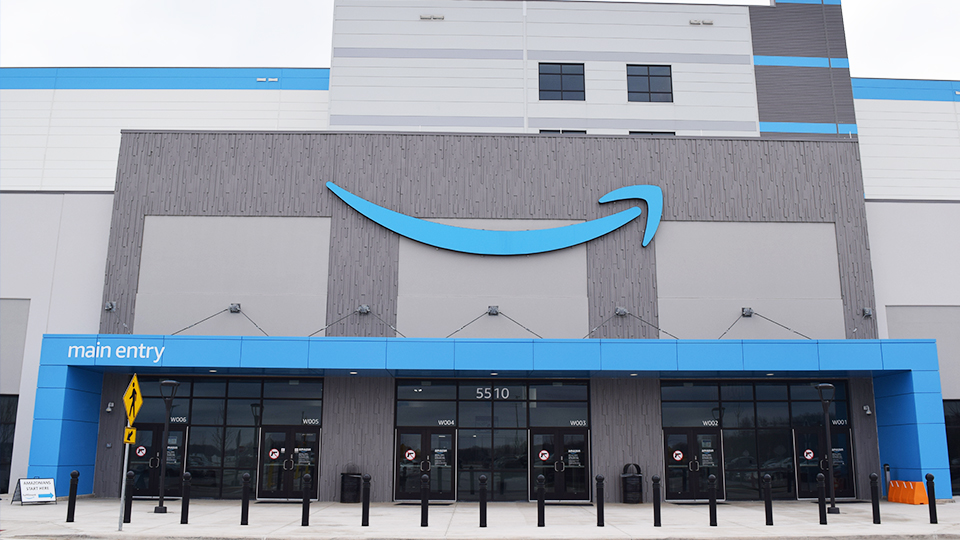Study: Amazon warehouse workers say they struggle to afford food, rent
Subscriber Benefit
As a subscriber you can listen to articles at work, in the car, or while you work out. Subscribe Now
Five years after Amazon.com Inc. raised wages to $15 an hour, half of warehouse workers surveyed by researchers say they struggle to afford enough food or a place to live.
The national study, published Wednesday by the University of Illinois Chicago’s Center for Urban Economic Development, asked U.S. employees about their economic wellbeing, including whether they’d skipped meals, went hungry, or were worried about being able to make rent or mortgage payments.
Fifty-three percent of respondents reported that they’d experienced one or more forms of food insecurity in the prior three months, and 48% experienced one or more forms of housing insecurity. Workers who said they took unpaid time off after getting hurt on the job were more likely to report trouble paying their bills, the researchers found.
“It’s not necessarily that Amazon’s an outlier,” said Sanjay Pinto, who co-authored the study with Beth Gutelius. Still, “they’re certainly not taking the lead in creating family-sustaining jobs.”
Amazon didn’t immediately comment on the substance of the survey’s findings but cited the company’s criticism of a recent Oxfam report on workplace surveillance that relied on the same research. The survey couldn’t prove respondents actually worked for Amazon, the company said, and its duration likely meant only people with “extremely negative experiences” took the time to respond, among other critiques.
Amazon has long been criticized for its treatment of employees, especially those who pack and ship boxes in its warehouses. Much of the criticism has focused on injuries that have exceeded the rate of logistics industry peers. Amazon has pledged to make its warehouses safer, in part by automating aspects of the job that require repetitive motions. Pinto and Gutelius examined injuries among Amazon’s ranks in a report published in October before turning their focus to workers’ economic circumstances.
The Seattle-based company is the second-largest private-sector employer in the U.S. behind Walmart Inc. Amazon accounts for about 29% of the U.S. warehousing industry workforce, the researchers estimate. As such, the company plays a leading role in setting pay and working conditions of a sector transformed by e-commerce.
The 98-question online survey sought out Amazon employees through social media advertising, targeting warehouses and neighborhoods that host company facilities. The researchers also sprinkled in quality checks to weed out responses from people who appeared to be giving inauthentic responses.
A total of 1,484 workers in 42 states gave enough information to be included in the results. For the portions dealing with economic security, the sample size varied between 1,306 and 1,472 respondents. The margin of error was plus or minus 2.5 percentage points. The work was funded by the Ford Foundation, Oxfam America and the pro-labor nonprofit National Employment Law Project.
A third of survey respondents reported using government-funded programs – primarily food stamps or Medicaid – in the last three months. That echoes a 2020 analysis by the U.S. Government Accountability Office, which found Amazon was among the biggest employers of people receiving food assistance in nine states that reported the data.
Amazon didn’t immediately reply to a request for comment made after the survey’s publication early Wednesday. Responding to the publication of the survey’s prior installment, a company spokesperson dismissed the report, saying it was “not a ‘study’ – it’s a survey done on social media, by groups with an ulterior motive.”
Amazon’s median U.S. employee was paid $45,613 in 2023, up from $41,762 the year before, the company said in a filing last month. The company says employees in warehousing and transportation are paid more than $20.50 an hour, on average. The survey, which was conducted between April and August 2023, excluded managers and skews a bit lower: Most respondents reported wages from $16 to $20 an hour.
Some 65% of workers who come to Amazon earn more than they were making at their previous employer, the survey shows. And the same percentage of workers report receiving a raise while working at the company. Moving up the ranks in Amazon’s assembly-line like warehouses is a tougher proposition: Just 13% of workers reported receiving a promotion during their time at the company, survey data showed.
Respondents who joined Amazon from another company were most likely to have previously worked in food preparation and services, sales and manufacturing.
“The story of Amazon is a sad story of the declining expectations of American workers of their employer,” said study co-author Gutelius, a longtime researcher of logistics and warehouse work.
